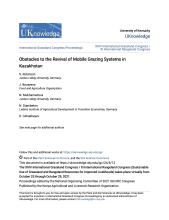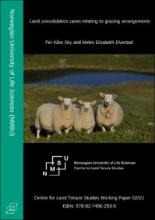Land Library Search
Through our robust search engine, you can search for any item of the over 73,000 highly curated resources in the Land Library.
If you would like to find an overview of what is possible, feel free to peruse the Search Guide.
/ library resources
Showing items 1 through 9 of 634.The Orinoquia region in Colombia is home to diverse ecosystems, including forests and various agroecological zones, but extensive cattle ranching poses a significant challenge as it contributes to deforestation and threatens the region's valuable forest resources.
To strengthen institutional arrangement that link national developing agencies dealing with rangeland rehabilitation and management with the end users (pastoralists and livestock keepers), representatives from ICARDA, Office de l’Elevage et des Pâturages (OEP), and Tunisia's General Directorat
Trees in dryland forests and wooded areas provide key ecosystem services such as animal feed, timber, fruits and, regulation of soil and water cycles.
Livestock mobility was an essential characteristic of Kazakh livestock production systems, allowing animals to take advantage of spatial and temporal variability in climate and vegetation, optimising forage intake over the year. These systems broke down following the end of the Soviet Union.
Frequent flooding worldwide, especially in grazing environments, requires mapping and monitoring grazing land cover and pasture quality to support land management.
Land consolidation courts deal with cases where the relationship between holders of grazing rights needs be regulated, but also where the rights holders are competing with other potential land uses, such as building holiday cabins, forestry, hunting, etc.
Environmental impact assessment (EIA) is a key tool for both environmental and land management. It identifies potential adverse and unintended consequences of the projects on land use and the environment and derives possible mitigation measures to address these impacts.





